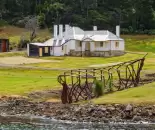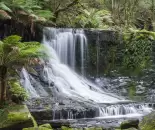The Bay of Fires Conservation Area, located on Tasmania’s north-east coast, is renowned for its breathtaking beauty. Named by Lonely Planet as one of the world’s 'Most Beautiful Beaches', this conservation area offers a series of magnificent bays, each characterized by white sandy beaches, turquoise waters, and striking orange lichen-covered granite boulders.
Natural Attractions and Activities
Visitors to the Bay of Fires can enjoy a range of activities. The area is perfect for long leisurely walks, swimming in protected bays, fishing off the rocks, and quiet coastal camping nestled behind the dunes. Bird-watching is a popular pastime here, with sightings of hooded plovers, sooty and pied oyster catchers, and various gulls frequenting the shores. The scenic reefs and underwater caves are ideal for snorkelling and diving enthusiasts, offering abundant sea life to explore.
Historical and Cultural Significance
The Bay of Fires was named by Captain Tobias Furneaux in 1773 when he observed numerous fires along the coast, indicating a densely populated area. The Aboriginal bands who frequented the region called it a meeting place for family groups, leaving behind significant midden sites in the sand dunes. These sites are sacred to the Tasmanian Aboriginal community and are protected as part of the living museum of the area.
Camping at the Bay of Fires
Camping at the Bay of Fires is a unique experience, with plenty of opportunities for tents, caravans, and campers. The northern section, from the mouth of the Ansons River to larapuna/Eddystone Point, is particularly popular for camping. Campgrounds are accessible via Ansons Bay Road and Policemans Point Road. Visitors planning to camp are advised to stock up on food and fuel before arriving, as St Helen's, the nearest town, is a 30-minute drive away.
Wildlife and Safety Tips
The coastal heath and dry sclerophyll forests surrounding the Bay of Fires provide an ideal habitat for a rich variety of native mammals. Visitors are reminded not to feed wildlife and to take precautions when driving through reserves at night to avoid accidents involving native animals. When swimming, it's essential to be cautious, as Bay of Fires beaches have steep drop-offs into deep water and are subject to rips.
Visiting the Bay of Fires
Access to the southern section of the Bay of Fires is from St Helens via Binalong Bay Road, terminating at The Gardens. This picturesque area was named by Lady Jane Franklin and offers a scenic drive along the coast. The Bay of Fires is part of the East Coast Whale Trail, with regular sightings of whales and informative signage about the region's whaling history and migration patterns.
For more information on exploring and camping at the Bay of Fires Conservation Area, visit the following pages:








